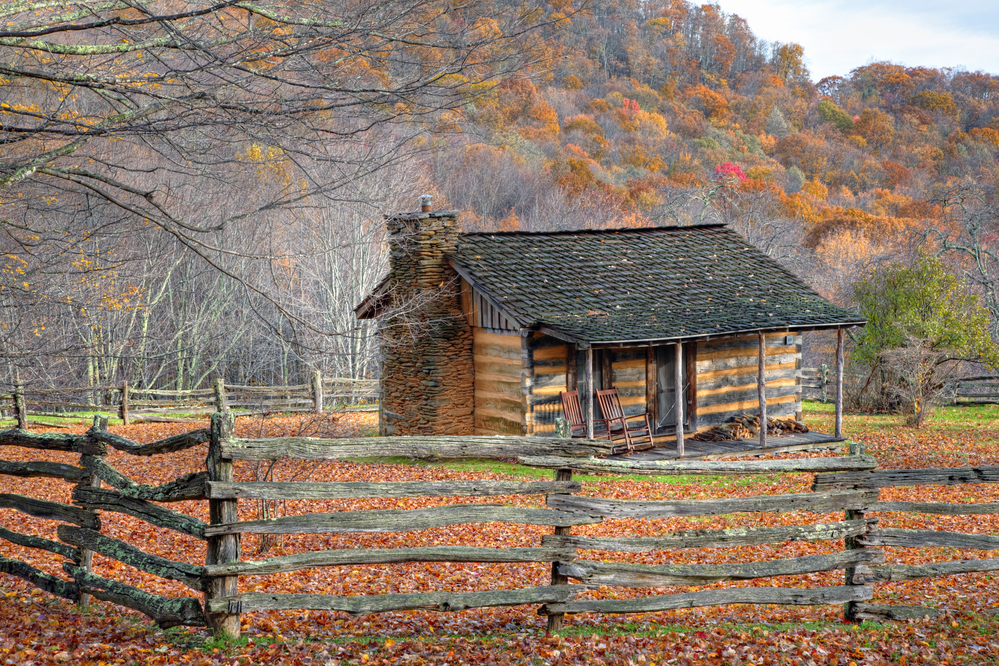Old is gold! This adage holds true even for log cabins. Don’t believe me? The oldest log cabin from the 1600s, Nothnagle Cabin, owned by Harry and Doris Rink, was listed on the market with a $2.9 million price tag. History comes with a price. Log cabins in the United States were built nearly 400 years ago by European settlers, particularly the Finnish and the Swedes. Log cabins were being built and used as homes and shelters from ages in Europe, and the early Europeans settlers brought their skilled craftsmanship and traditions with them to America. According to historians, the first of these log cabins were built in Nya Sverige, a Swedish colony near the Delaware River. It didn’t take long for the Scots, Irish and Germans to pick up the technique of log cabin construction.
Early Log Cabin Construction
In the beginning, early settlers made simple structures compromising of a single room, with one door and usually no windows. Even if windows were cut in the walls, they would use animal skins or parchments to keep drafts out. The tallest, straightest trees like pine and spruce would be used by log cabin builders and the walls were constructed a log at a time. Logs were fitted in tightly together with notches cut into the logs at each end. When the roof and walls were finished, the cracks would be sealed with mud or clay. This was ‘chinking’ of the olden days.
Today log cabins have come a long way in terms of design and construction. Log cabins today can range from the luxurious to the rustic, but they are all modern, functional and fashionable. Whatever be the design, there is no argument that log cabins are durable. Let’s look at some of the oldest log cabins in America that have proudly stood the test of time and harsh weather.
C.A. Nothnagle Log House (Braman-Nothnagle Log House)
This historic house located in Gibbstown Township, New Jersey, was built between 1638-1643. The asymmetrical fireplace in the corner of the log home, is atypical of Scandinavian cabins built around that time. The property is 1,800 square feet and people have lived inside the cabin until 1918. This log home is on both the National and State Historic Registers. The log cabin it was built with Oak; a hardwood and has surprisingly managed to retain all but one of its original logs. The Rinks, the current owners have set it up as a museum now, complete with original artefacts in place and is open to the public for viewing.
Lower Swedish Cabin – 1640
The Lower Swedish Cabin was built just a few years after the Nothnagle log house in 1640 and is located next to Darby Creek in Drexel Hill, Pennsylvania. This two storey cabin was built by Swedish immigrants, in the New Sweden colony. It showcases the craftsmanship of America’s early settlers. It was added to the list of NHRP in 1980.
It was originally used as a trading post for the Swedish to trade tools, fur and native crafts with local Native Americans. Settlers over the years have used it for different purposes throughout the 18th and 19th centuries. Siegmund Lubin, a film pioneer used the cabin for early motion pictures from 1904 to 1906. This became a private residence until 1937 till it became property of Upper Darby Township. Indians, when it was used it for Girl Scouts meetings. It was vandalised during the mid-1900’s till the government took over and restored it to its former glory.
Edward Morgan Log House
Another Pennsylvania classic log home worth looking up is the Morgan Log House, which was built on 600 acres of land by Griffith Jones. The log house is situated in Kulpsville, just north of Philadelphia. This two and a half story log home was built in a medieval Germanic style around the early1700s. Morgan Log House was listed on the NHRP in 1973. The house has changed hands many times since then, and is currently owned by The Towamencin Historical Society. The Morgan Log House on 1.718 acres of land is a tourist attraction now and community events are held here.
Molalla Log House
The Molalla Log House predates the beginning of the American explorers, Lewis and Clark’s 1804 expedition by almost a decade, dating it back as far as the late 1700s. It is built in Clackamas County, Oregon. Supposedly Catherine the Great sent craftsmen to settle in the area and they built Molalla Log House. This theory is fuelled by the construction, which is unlike anything Oregon has ever seen. The log house also known as the Fox Granary, has about 17 Douglas fir logs high (each 25 feet in length) and these logs are stacked so perfectly that no chinking was needed. There are pencil marks which show a unique numbering system too. Since then the cabin was dismantled in 1892 and relocated to a nearby warehouse for restoration. Mololla Log House has functioned as a house, an animal shelter, a machine shed and the Fox Granary. This debatably oldest structure of Oregon is currently under the maintenance of Molalla Area Historical Society.
Most of the old log cabins are well crafted from hewn logs, and built from hard woods such as oak and walnut, which makes them better resistant to harsh weather. No wonder they have lasted so long! They are a lasting testament that log cabins can last for ages, if built well and maintained properly.
Get in touch with Performance Log Homes for help designing and constructing log homes in the Southeast United States including Florida, Georgia, North Carolina, and South Carolina Call us on 800-781-2551.


